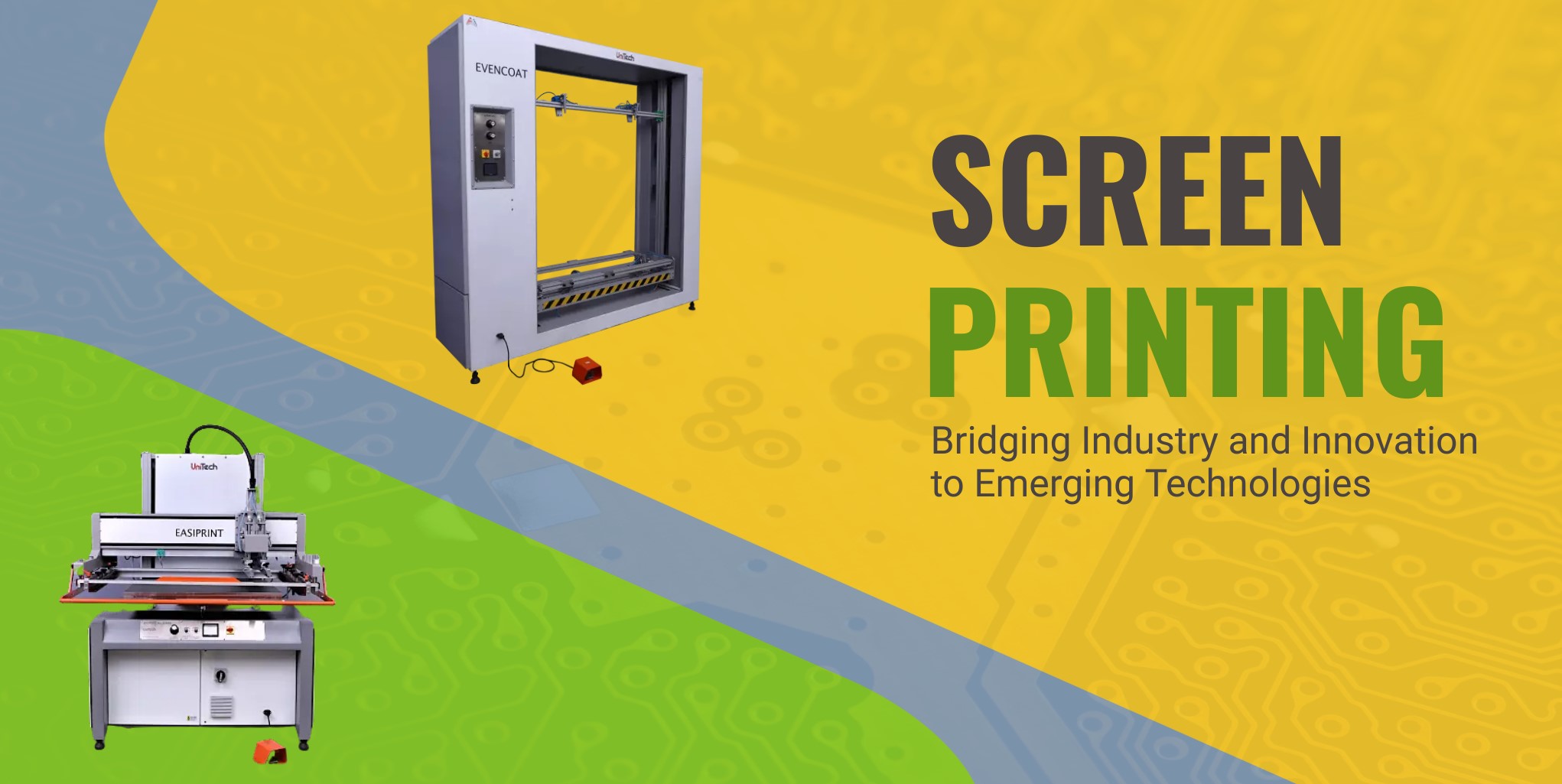Get the best out of you ”

How about exploring the versatility of Screen Printing from Industrial applications to Cutting-Edge Electronics and Beyond
Overview of Screen Printing for Industrial Products
The document provides an overview of screen printing for industrial products based on 30 years of practical experience and research. Initially, the focus was on graphic applications, but there has been a shift towards industrial products, particularly those with high value.
In engineering applications, screen printing is utilized for creating functional components and devices. This includes printing conductive tracks for circuitry, printing structural elements for mechanical components, and printing insulating layers for electronic assemblies.
In-Mold Decoration (IMD)
Screen printing is an integral part of the IMD process, where printed graphics or patterns are applied to plastic parts during the molding process. This technique is commonly used in the automotive industry for interior trim components, consumer electronics, and household appliances.
Process Principles
Screen printing involves several key components: frame, mesh, stencil, squeegee, ink, and substrate. The process relies on the transfer of ink through a stencil onto a substrate to create a printed image.
A key technology in screen printing. They offer advantages such as good registration and are available in both web and sheet-fed options.
Exploitation of Screen-Printing Capabilities
Screen printing is praised for its versatility in depositing various ink systems and its ability to work with a wide range of substrates. It can also achieve thick film deposition consistently and with excellent repeatability.
Ink Systems and Substrates
• The diversity of substrates that can be used in screen printing, including flexible film, thermoplastics, polycarbonates, glass, and cellulose-based materials.
• Various ink systems are highlighted, including conductive, luminescent, organic, and inorganic inks. These ink systems often exhibit complex rheology, including shear rate dependence and thixotropy.
Application Groups
Printing of Electronics
The printing of Organic Field Effect Transistors (OFETs) and semiconductor devices, screen printing process involved. Organic Field Effect Transistors (OFETs): Screen printing is used in the production of OFETs, which are electronic devices based on organic semiconductors. OFETs find applications in flexible displays, electronic paper, smart cards, and organic electronic circuits.
Screen printing is extensively employed in the electronics industry for manufacturing various electronic components and devices. This includes printing conductive traces and electrodes on printed circuit boards (PCBs), fabricating thin-film transistors, producing membrane switches, and assembling flexible electronic circuits.
Sensors
Screen printing is extensively used in sensor technology, covering a wide range of applications such as environmental monitoring, healthcare diagnostics, and industrial process control. It enables the fabrication of various types of sensors, including biosensors, gas sensors, temperature sensors, and humidity sensors, electronics (including PCBs, switches, batteries), and displays
Printing of Medical Sensors
Electrochemical devices for medical sensors are discussed, including the use of conductive and non-conductive inks with chemical reagents to create various sensor types, such as single-electrode and multi-electrode sensors.
Electrochemical Devices: Screen printing is utilized in the fabrication of electrochemical sensors and biosensors for medical applications. These devices are capable of converting biochemical signals into electrical signals, enabling the detection of analytes such as glucose, cholesterol, and biomarkers associated with diseases.
Biosensors: Screen printing plays a crucial role in the development of biosensors, which are analytical devices used for detecting biological molecules. These sensors find applications in medical diagnostics, food safety testing, environmental monitoring, and biotechnology research.
Displays
Manufacturing Principle - Screen printing is an essential manufacturing process in the display industry for fabricating various types of displays, including liquid crystal displays (LCDs), organic light-emitting diode (OLED) displays, and electroluminescent displays (ELDs). It is used for printing transparent conductive layers, bus bars, phosphor layers, dielectric insulators, and rear electrodes.
Other Potential Applications
Communications - Screen printing is employed in the production of communication devices such as antennas, RFID tags, and smart cards. It enables the printing of conductive traces and components on flexible substrates, facilitating the integration of electronics into everyday objects. Screen printing is applied in the fabrication of various consumer products and electronic devices, including roll-up keyboards, touch-sensitive interfaces, membrane switches, and integrated electrical appliances. It enables the production of compact, lightweight, and cost-effective components with advanced functionality.
Smart Packaging
Screen printing is utilized in the development of smart packaging solutions with built-in sensors, indicators, and interactive features. This includes temperature sensors for monitoring food freshness, color-changing indicators for detecting product tampering and chemical sensors for detecting harmful substances.
Developing new technology involves numerous challenges that can hinder progress and implementation.
Several research issues are identified, including line printing quality, ink rheology, overprinting layers, and optimization of process parameters such as substrate characteristics. Also, various experimental investigations, including studies on squeegee type, angle, and pressure, as well as screen parameters and ink characteristics. Lastly Surface properties are crucial for successful screen printing, affecting factors such as wetting, stencil adhesion, and ink release. Various techniques for surface characterization are discussed.
Conclusions
Developing new technology is a complex and challenging process. It involves high costs, technical difficulties, and strict regulations that can slow down progress. Predicting how the market will respond and protecting intellectual property can be tricky. New technology also needs to work well with existing systems, and finding the right talent to develop it can be hard. Additionally, there are concerns about cybersecurity, environmental impact, and ethical issues like data privacy and job loss. Addressing these problems requires careful planning, teamwork, and the ability to adapt to changes, which are crucial for bringing new technology to life successfully.